Cuba as Seen from a ‘The Nation’ Tour
By Circles Robinson
HAVANA TIMES — Last month a delegation organized by the prestigious left-leaning US magazine The Nation visited Cuba on an educational fact finding trip to get a first-hand look at the island at a time of economic reforms.
The delegation had the opportunity to meet with numerous important Cuban officials and participants in the changes taking place in the Caribbean country.
One of the tour participants, Anna Theofilopoulou*, wrote a detailed account of her impressions after the busy week-long trip to Havana. Considering it a good starting point for further discussion in HT we asked for permission to republish it for our readers and also translate it for Cubans and other Spanish readers.
Report: ‘The Nation’ Leads a Trip to Cuba
Katrina vanden Heuvel, editor The Nation
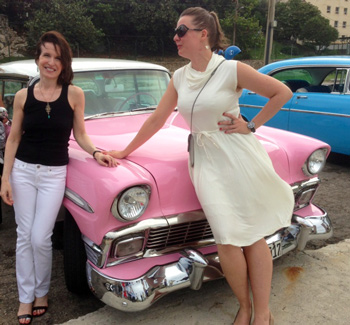
“The Nation for decades has covered Cuba in a way that few publications have done or dared,” I told The New York Times in June, ahead of the magazine’s first-ever educational trip to the island. Even as Washington’s position on the embargo remains frozen in time, remarkable changes are taking place in Cuba, from a new law that opens the country up to foreign investment to the paladares—private, in-home restaurants that are catering to increasing numbers of tourists and an emerging Cuban middle class. Behind the work of Cuban National Center for Sex Education Director Mariela Castro—President Raúl Castro’s daughter—Cuba is considering legalizing same-sex marriage, subsidizing sex-change operations and banning discrimination based on sexuality at the workplace.
The US embargo against Cuba has been in place for more than fifty years, and it remains in place thanks in large part to anti-Castro reactionaries in Congress, most notably Senator Bob Menendez (D-NJ) and Representative Ileana Ros-Lehtinen (R-FL). But as the right-leaning US Chamber of Commerce continues to oppose the embargo, and as “people-to-people” trips (like The Nation’s) facilitate cultural exchange by bringing in Americans on education-based excursions and facilitating more informed dialogue about policy, it is increasingly apparent that our Cold War policy is leaving us—and not the Cubans—out in the cold.
In the report that follows, Anna Theofilopoulou—who participated in The Nation’s first-ever people-to-people education trip—describes what she discovered. Though the island is saddled with “dire economic problems,” Theofilopoulou nevertheless found encouraging developments in healthcare and in the economy. Cuba’s infant-mortality rate is lower than ours, for example, and in indicators like Uneven Economic Development, Poverty, and Economic Decline, the separation between Cuba and the United States is narrower than you might imagine. Theofilopoulou also debunks some of the worn-out fallacies about Cuba that many Americans still believe in (including the notion that democratization of the island is impossible as long as Castro remains in power).
Meanwhile, at The Nation, we plan to continue these educational trips in to 2015 and beyond.
* * * * *
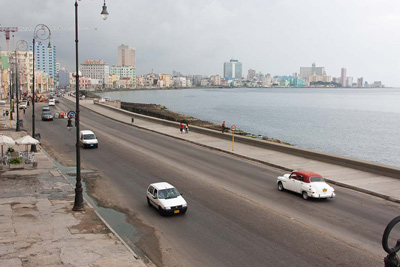
The Nation Magazine had its first ever educational exchange trip to Cuba, under the people-to-people educational outreach program allowed by the State Department. The program has been expanded by President Obama. I was fortunate to participate in the trip which included meeting with individuals representing the government, the media, non-governmental organizations, the Catholic Church and some private citizens. We also enjoyed some of Cuba’s amazing culture.
In the US, Cuba is mostly known for the 1959 revolution that brought Fidel Castro to power, the break of relations with the US and subsequent embargo, the disastrous Bay of Pigs operation, the Cuba missile crisis, the Mariel refugees and Brothers to the Rescue debacles, the Elián González incident and Fidel Castro’s relationship with Venezuela’s Hugo Chávez. Also that Fidel Castro, after running Cuba for fifty years, appointed his brother Raúl initially to replace him temporarily and eventually to become president of Cuba.
One of our interlocutors, Rafael Hernandez, publisher of the political quarterly Temas, enumerated thirteen erroneous assumptions in the US about Cuba.
1. Since Raúl Castro became president, there has been no political change.
2. Raúl is the end of the line; once he goes, there will be no succession.
3. The military is the key institution in Cuba.
4. Dissent is prohibited and punished.
5. Political opposition groups are the democratic alternative in Cuba.
6. National political mediation is led by the Catholic Church.
7. As long as one party remains in power, no democratization is possible.
8. Cubans know nothing about the rest of the world.
9. Most youth want to leave Cuba.
10. Average monthly income in Cuba is $20.00
11. Cuban émigrés are exiles.
12. US-Cuban policy is driven by the Cuban-American lobby.
13. The Cuban-American political elite is changing as the second generation comes of age.
It is hard to say how much such assumptions contribute to the embargo which continues. There has been some tweaking here and there to deal with humanitarian issues after Cuba faced a food crisis when the former Soviet Union stopped subsidizing its economy two decades ago; also, after lobbying by Cuban Americans, remittances to relatives in Cuba and exchange of family visits are now allowed.

While aware that Fidel Castro overthrew a particularly corrupt and noxious regime and installed a socialist system which, for all its limitations, provided all Cubans with education, and medical health and covered everybody’s basic needs, I have been skeptical of a system that allows somebody to stay in power for fifty years and then pass the presidency to his brother.
But, having heard and read the impressions of friends and professional colleagues who had traveled and lived there, I wanted to see Cuba for myself and meet Cubans in their own country. I was also curious to see a country that has remained in a sort of time capsule because of the embargo.
After a week in Havana, with a one-day excursion to the Bay of Pigs and visits to Ernest Hemingway’s house and to an urban farm in the outskirts of Havana, I found Cuba an intriguing and fascinating country which I want to understand better. I left it with two over-riding thoughts.
One is a desire to return and see more of Cuba, visit its cities and country side, and meet and talk to more of its people. The second is wondering what is the US hoping to accomplish with the continuation of the fifty-year-old embargo?
What is the purpose of continuing with this futile exercise, the main contribution of which seems to be keeping 11 million people financially miserable? Does anybody in the US government, other than the most ardent ideologues, really believe that through the embargo the US will achieve “regime change” in Cuba or that the political system will change into a neo-liberal democracy?
FIRST HAND IMPRESSIONS OF CUBA
Politics and the society
Like other interlocutors, Rafael Hernandez refuted the above-mentioned assumptions held in the United States. He pointed to the shrinking of the public sector under Raúl Castro, the growth of the private sector and downsizing of the military. Specifically, small private business is spreading, government employment has been reduced and continues to decrease, the food distribution system is being restructured. This process started in the ’90s, has accelerated since 2007.
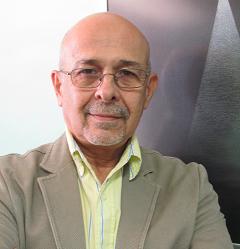
He pointed out that Miguel Diaz-Canel, the vice president who will replace Raúl Castro, is a reformer, planning to continue with the changes. Despite what is believed in the United States, his views on key issues are known in Cuba.
Cubans are encouraged to express their views and even their complaints, they are polled regularly about what needs to improve and they are not hesitant to express their opinions. They are encouraged to participate in the policy making process and they are listened to. He claimed that Cuba has democracy and freedom but they are defined differently.
The Catholic Church, is one voice among many and stressed that propaganda that Cuba is a communist godless society, is completely unfounded. Through their education system, and the support that Cuba enjoys by just about every country, except the US, Cubans are among the most knowledgeable people about the rest of the world.
With the exception of some professions deemed essential for the country, young Cubans can and many of them have left. In fact, brain drain is a serious issue for Cuba as young people who never knew the previous system do not have the same commitment to the revolution as the previous generations and are not content with Cuba’s isolation by the US. He called the assumption that the average Cuban income is $20 per month absurd. Cuban émigrés are welcome to return, as long as they do not try to overturn the government.
Mr. Hernandez was also critical of policies in Cuba and identified seven key challenges for the Cuban socialist system with suggestions how to deal with them. (1) There has been a four-fold increase in inequality and poverty after the start of the crisis in the early ’90s; currently, 20 percent of Cubans live in poverty and 53 percent of houses are bad or very bad; (2) The hyper-centralization and weak rule of law result in low political participation. (3) The state and bureaucracy are over-extended; (4) There is corruption; (5) Demographic imbalance is a problem; Cubans over 60 comprise 26 percent of the population while the birth rate is the lowest in Latin America; the annual migration to the US is 35,000; (6) the media are controlled by the government, he called the syndrome “officialism”; (7) last but not least, the US embargo perpetuates the seige mentality.
He proposed to deal with the challenges as follows: decentralize the government, give more power to local authorities and more autonomy to state enterprises, expand the non-state sector, encourage self-employment, shrink the size and power of the bureaucracy and enforce the rule of law.
The Economy
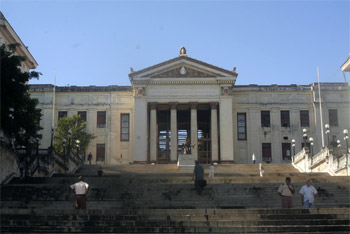
At the Center for the Study of the Cuban Economy at Havana University we heard about the opening of the economy and the movement toward rationalizing it, the acceptance of foreign direct investment and joint ventures mainly in tourism, the permission and encouragement of small private enterprise in some 150 sectors and the coming monetary reform.
Cuba was forced to re-evaluate and rationalize its economic model when the Soviet Union collapsed and Soviet subsidies ended. There was a 33 percent contraction of the economy; Cuba lost close to 50 percent of its fuel; the average weight of Cubans went down by at least one kilo; the low birth rate increased, (although later reversed). This economic restructuring continues gaining force under Raúl Castro. It includes laying off state workers; expanding the non-state workforce; allowing Cubans to buy and sell homes and vehicles; distributing land that was previously idle; empowering firms and local governments; experimenting with business models such as co-ops. Wondering around Havana, one sees examples of these changes.
Most significant, the government decided to change their approach and are moving towards decreased social spending, which includes decreasing the number of items that Cubans buy with their ratio book with the intent of eventually eliminating it. Key to all this, is the plan to abolish the dual currency (the convertible peso and the regular Cuban peso) which makes life unaffordable for the average Cuban. However, the government knows that this will cause inflation to rise at first. It will make life even harder for the 20 percent of Cubans living in poverty, especially elderly without families to provide for them although there are programs mainly by non-governmental organizations helping them.
Cuba still faces dire economic problems. With the opening of the tourist sector, the one booming part of the economy, large discrepancies in income and standards of living are being created. Cubans who work in tourism or have relatives in Miami sending money, are better off than the average professional working for the government. Our guide had studied law, had worked in the Foreign Service but became a tourist guide in order to make a reasonable living. A doorman in a restaurant who was a child psychologist by day, was forced into a night job to supplement his income. A young veterinarian taxi driver had abandoned her profession because the money that she was earning in a government run clinic was so little she and her colleagues had to depend on gifts by those bringing their animals.
While Cuba seems a natural place for agriculture to provide for its own people and even export, problems persist. There was destruction of arable land due to large scale farming during the time of the Soviet subsidies, although this land is slowly being reclaimed, as told by the Antonio Nunez Jimenez Foundation for Sustainable Development and the Environment. Citrus fruit, a natural for the climate as Florida demonstrates, is not cultivated in large scare because it is not deemed profitable for foreign exchange. In fact, cultivation of vegetable and fruit is still very small and in the one local fresh food market in Havana that we visited, we saw prices almost comparable to those in New York’s Union Square market. Meat or even chicken are rare and expensive for the average Cuban, although provided in excessive and wasteful quantities for tourists. Killing one’s own domestic cattle, is not allowed and permits are required to do so. This results in people finding ways to go over the system, as recounted anecdotally by our guide. Cuba imports 80 percent of its food and even more absurdly, the US accounts for 60 percent of it, paid in cash dollars, ostensibly for humanitarian reasons.
Housing
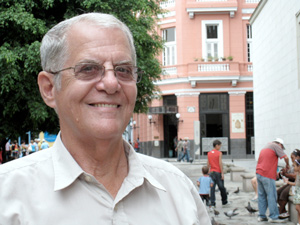
Havana is one of the most beautiful historical cities in this hemisphere, with magnificent old (and for the most part dilapidated) colonial buildings that seem to be reaching the end of their life simultaneously. Seeing the city upon arrival and walking around old Havana, I was struck by its beauty.
A meeting and exchange with the renown architect and urban planner Miguel Coyula about the city of Havana, its history, the reasons about its current sad state and what is required to maintain and renovate its buildings, was telling. Follow-up meetings with representatives of the City Historian and at the Center for the Study of the Cuban Economy clarified the combination of internal policies and financial constraints that have contributed to the deterioration of the majority of buildings.
While home ownership is high, thanks to housing subsidies, laws requiring apartment owners to maintain their own apartments but absolving them of responsibility from maintenance of common areas, have resulted in the buildings’ overall deterioration. The average house is seventy-five years old, maintenance subsidies are non-existent, therefore even working professionals find home repair simply too costly. Residents have been very innovative to meet basic housing needs and one sees shanty towns built at the top of buildings or the courtyards of colonial houses and balconies used for different purposes to the original ones. A program of renovation started in the eighties has been proceeding slowly.
More worrisome are the consequences of recently enacted laws allowing Cubans to buy their own houses, which they do for the most part with remittances from relatives in Florida. This is resulting in many of the historical buildings to be purchased by Cuban Americans who will quite likely demolish them, due to their state of disrepair, and will replace them with large glass towers as has been the case in many cities the world over.
Healthcare
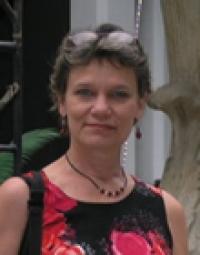
The meeting with Gail Reed, founder and executive director of the Medical Educational Cooperation with Cuba, (MEDDIC), was instructive. MEDDIC is a nonprofit organization created in 1997 to enhance cooperation among the United States, Cuba and international health communities aiming at better health outcomes and equity.
With emphasis on medical training and healthcare for everybody, Cuba is among the countries with the best healthcare indicators in the world. It has one of the highest doctor-patient ratios in the world at 6.7 doctors per 1000 people. Life expectancy is 78 years, just behind the USA. The infant mortality rate is 4.7 per 1000 live births, lower than in the US at 5·9.
The priority of access to healthcare for all was spearheaded by young doctors and medical school students and put into practice by the government. Before entering into any other specialty, every medical school graduate does family medicine which is at the core of community based primary healthcare, key to the overall improvement in healthcare. The program of doctor and nurse for each community was started in the 1980s and helped the country deal with the “special period” after the break with the Soviet Union. A disruption at that time was resolved by giving a bigger role to nurses.
The investment in biotech continues, Cuba has meningitis B vaccine since 1989 and has developed a treatment for advanced diabetic foot ulcers. Developed by Cuba and registered in more than fifteen other countries, it has reduced relative risk of amputation in Cuba by 69 percent. According to Reed, who has written a comprehensive study of the embargo’s effect on Cuban health, the US has rejected Cuba’s offer of this treatment ignoring the mutual benefits.
Currently there are 6,000 doctors in the pipeline. Cuba provides scholarships to doctors from Latin American countries such as Honduras, Haiti. One of Cuba’s key exports are doctors sent free to poor countries around the world in the past. This was changed under Raúl Castro, with countries that can afford it paying Cuba and the money channeled into the health system.
Foreign Relations

The meeting with Josefina Vidal, the Director of North American Department, at the Foreign Ministry, focused exclusively on US-Cuba relations, the impact of the embargo on the economy and even other sectors of the society and the current state of affairs between the two countries. The importance of the relations with the US has resulted in a restructuring in the Foreign Ministry to have the department focus exclusively on US-Cuban relations. The impasse with the US currently concerns the detention on lengthy prison terms by the US of the Cuban Five (currently three) on espionage charges and by Cuba of Alan Gross, a sub-contractor of the USAID serving a fifteen-year prison term on accusations that he secretly imported banned electronic equipment to Cuba. The impasse remains even though there are discussions and cooperation with the US on technical issues such as drug trafficking, immigration and oil spill response.
The absurdity of the US insistence on maintaining the embargo and having only an Interest Section office in Havana, became more obvious when we were told that there are 140 embassies of states and international organizations in Havana. There are 64,000 Cubans working in ninety-four countries and 13,000 foreign students studying in Cuba (mainly medicine). Cuba together with Norway have been assisting and hosting the talks of the Colombian government with the rebels. Countries such as Brazil, and some members of the EU, are assisting Cuba to restructure its economy. China and South Korea are taking early advantage of economic opportunities.
Josephina Vidal pointed to two Cuban American politicians who are the most implacable enemies of the Cuban government and strong supporters of the embargo; House member Ileana Ross-Lehtinen of Florida and Senator Robert Menendez of New Jersey, currently chairman of the Senate Foreign Relations Committee.
Conclusions
Despite the commonly held views about Cuba by most politicians and the media, in the US, Cuba is changing although not fast enough for some. While continuing with the socialist model, it is reforming its economy, expanding its burgeoning private sector and somewhat opening its political system, although so far there has been no attempt to change the one-party system. Travel restrictions on ordinary citizens have been eased but political opponents are still monitored and harassed by the government which uses the embargo as a pretext claiming (sometimes correctly) that US intelligence agencies are trying to undermine the state.

And despite continuous US effort to destabilize Cuba (see recent efforts by USAID to generate mobs through Twitter) impressively Cuba ranks 107 to the US 159 in the Fragile States Index created by the Fund for Peace and published by Foreign Policy for the past ten years. Finland ranks the highest at 178 and South Sudan the lowest at 1.
The index puts countries into perspective by providing an annual snapshot of their vitality and stability and ranking them accordingly, using certain ;indicators[i] which it computes to a total. Based on this index, the United States ranks a total of 35.4 to Cuba’s 70.8 with Finland the most stable with a total of 18.7 and South Sudan the most fragile with a total of 112.9.
Not surprisingly, some indicators for Cuba and the US show wide differences, with the US scoring better on Human Flight & Brain Drain, State Legitimacy, Human Rights, Security Apparatus and External Intervention. However in three other key indicators, such as Group Grievances, Uneven Economic Development, Poverty and Economic Decline, the ranking is very close.
For Cuba, some of these rankings, such as state legitimacy, human rights, and security apparatus are clearly due to the heavy handedness of the Cuban political system; while those for human flight and external intervention can only be attributed to the US embargo. On the other hand, seeing Cuba’s relative good rankings and relative progress in group grievances, uneven development and poverty and economic decline, an unbiased observer would only attribute those to its political model.
Looking at these and other indicators, after having experienced Cuba first hand, I have been wondering why Washington refuses to engage with Cuba and work together to mutual benefit. Because of the embargo, the United States remains uninvolved in the opening of its economy that Cuba has put into play in recent years and misses out on mutual business and other opportunities in a society which is overall positively disposed toward the States, just ninety miles off its shores.
Do US policy makers understand or care to understand that by continuing the embargo they provide an easy excuse to the Cuban government to hide its own mistakes and inefficiencies? Isn’t it time for the US to engage in some self-examination regarding this particular policy and change it?
—–
(*) Anna Theofilopoulou specialized on political and economic development issues—including the Middle East, the conflict over Western Sahara, Decolonization and the impact of trade and foreign investment on developing countries—while working in the United Nations. Currently, she works as a political analyst/writer covering North Africa and asylum policy in the US.







I’m a U.S. citizen who has lived in Cuba for 3 years, in both Havana and in un-tourist-y areas. I describe myself as left-of-center, and am critical of U.S. Cuba policy toward Cuba. But in reading this article, it’s obvious that this “fact-finding” tour by The Nation (a publication formative to my own political development) was the guided tour, and that the tour’s participants made seemingly little effort to get outside the MININT-flavored bubble that was provided for them. With emagicmtman above, I hope that subsequent “visits, observations and reflections” might correct this regurgitation of the Conventional Wisdom of the left WRT Cuba. The two-sentence caveat in the article’s conclusion understates the problems. I was honestly left wondering how many members of The Nation’s delegation speak Spanish. Even initial conversations with random Cubans you meet–go to the Malecon (away from CDR minders) and talk with young people–quickly demonstrate that assumptions #4, 9 & 10 are indeed accurate. Carlyle MacDuff’s characterizations above correspond with my own experiences. I hope that my critical comment does not meet the same fate as Humberto Capiro’s.
The reality is that economically the embargo continues to have a significant effect and everyone including the government would like to see it removed. But politically it has had no effect whatsoever. If anything it has benefited the Castros in that it unites people against outside aggression and provides an excuse for failings and makes people less likely to criticize the government. Internationally it has also meant that countries in Latin America have desisted from criticising the Cuban government. All in all it has had no positive effects for both Cuba and the US whatsoever. In fact has been a real loser on all fronts. Removing this obstacle would make a completely new ball game and in my view would only be beneficial.
Thanks. We live in a town where there are no tourists and no hotels. My opinions are formulated by discussion (almost always one on one – the CDR has its ears) with everyday Cubans. Perhaps one of the most interesting observations from a man of just over 60, was: “Here we don’t have Socialismo, here we have Castroismo.”
I used to live at 72 Park West Village. You are right. Not ALL liberals who live on the Upper West Side are the same. It is simply a term of art to describe a type of liberal as opposed to the Upper East Side liberals or Soho or Downtown libs. No offense intended. I agree with your suggestion that all sides should meet, beginning with the Castros and the dissident community in Cuba. It seems illogical and disrespectful that the Castros claim to be available to sit down with Obama but refuse to meet with Yoani Sanchez, Berta Soler or Antonio Rodiles. I am optimistic for Cuba. After the Castros are out of the picture, things will turn around swiftly.
While many of her observations and conclusions were superficial and recycled, it is nothing that more visits, observations, and reflections can’t correct.
Of course following her article the usual chorus of nay-sayers chime in from the peanut gallery; I take even less stock of their analyses and conclusions.
I used to subscribe to THE NATION (from 1965 ’til maybe 2004 or 2005), but found that as time went by it generally towed the party line as much as GRANMA, only for the Democratic Party rather than the Communist Party! As some wag said of THE NATION back in the 1930’s, “How long can THE NATION be half Slav, half free!” (referring to THE NATION’s proclivity, at the time, of towing the party line of Moscow and the CPUSA, while at the same time noting THE NATION’s superior cultural coverage in its back pages) During my final years of subscribing, I used to read THE NATION solely for Alex Cockburn’s semi-monthly columns, the only witty and cogent writings within its pages. Then I just migrated over to COUNTERPUNCH. Lately, I’ve resubscribed, but am sorely disappointed by the level of most writing there. Quite frankly, as far as writing (if not political bonafides) is concerned, THE NEW YORKER, HARPER’s, and even THE ATLANTIC are better. Since there is “so little time and so much to read,” now including so much more on-line, I don’t know if I’ll continue to subscribe. Still, THE NATION has been around since Abolitionist times! Just hope their writing gets better and that they get rid of some of the hacks who grind out weekly paeans for Obama and the Democratic Party, both of which by this point have long since sold their soul (and for what!? Robert Johnson made a far better bargain!)
Moses, I was born at Gotham City Hospital, NYC, and resided on 87th.
Street Central Park West. Please don’t generalize regarding NY West Side liberals. Yes my parents voted for Kennedy but that’s because they were Catholic and had no choice. I’m quite independent in my thinking
and in most cases far off in the right of center spectrum. I lived for 10 years in Hawaii and spent many 24/7’s in Puerto Rico. Love the “islands.”
Through family marriage we now have Cuban/Irish offspring and my experiences in business had many a fine relationship with Ex- pat’s.
I’ve mentioned before my “visit” to Czechoslovakia and Romania in the early seventies so I’ve had one on one with folks living under communist rule. I think the powers to be in Cuba are well aware for a rapid change.
The internet is shifting all the gears so you can’t keep intelligent
people under raps as was done a decade ago. Let’s accept this
and get our okole’s (Hawaiian for asses) moving and expedite it
My suggestion is a meeting of all sides especially good folks like you
to get the ball rolling. Cuba is too precious to waste and its people
are the best of all!
“The meeting with Josefina Vidal, the Director of North American Department, at the Foreign Ministry, focused exclusively on US-Cuba relations, …”
Oh dear, the author of the piece didn’t do her home work. In 2003, Josephina Vidal was sent home from the US as part of a massive expulsion of Cuban diplomat spies. She was subsequently appointed to “official” duties as head of US relations within the Ministry of Foreign Affairs.
I always appreciate your interesting perspective on Cuba.
Griffin, I believe that the regime recognizes that the embargo acts to their advantage and that is why Cuban media – all of which is controlled by the regime, constantly pumps out how the “blockade” is the reason for all its incompetence and planning failures. Just watch Mesa Redondo, just watch the Education channel – it isn’t daily, but hourly. Yes, the regime does want to keep the embargo – they have thrived upon it!
I fortunately cannot be accused of being a “sympathetic Leftist or liberal who has visited Cuba on a “fact-finding” tour” but live at home there with my wife for most of the year – which perhaps fortunately for participants on this site makes my contributions intermittent. Don’t ever underestimate the uses that the embargo provides to the Castro regime in aiding them to hold “El poder” – the power!
Public utterances about the embargo are made for the benefit of the international community, whereas in reality the regime knows that it is to its advantage – ever heard of doublespeak?
The article lists thirteen “erroneous assumptions” by US citizens:
2) Raul Castro will be succeeded by Diaz-Canel. There will not be a sudden change.
3) Yes, the Military controls Cuba and in particular the economy.
4) Yes, dissent is prohibited – ie: it is illegal to criticize the regime.
8) Surprisingly Cubans are aware of much that is happening in the rest of the world. This despite indoctrination in the educational system and control of all media by the Communist regime. There is an old saying that “Truth will out.” and this is true in Cuba.
10) Yes, average income in Cuba is $20 per month with the old age pension being $8 (200 pesos)
The items I have listed are not erroneous assumptions!
Coño, Humberto! Your “hurtful” comments violated the Leftists’ right to freedom of speech, which means never having to hear anything they don’t agree with.
The Nation deleted all of my comments on their story comment section! They are truly “Democratic”!
Katrina vanden Heuvel represents the that part of the Democrat party known as ‘limousine liberals’. A wealthy upper west side New Yorker, she has street cred with her progressive colleagues and is often seen on national TV defending her liberal views. Fidel Castro has long been a darling of this crowd. His idealistic views regarding equality and fairness are appealing to this section of the progressive movement suffering from an intense case of white guilt and privilege. When, however, members of this crowd actually come to know the real Fidel, that is to say, the Fidel behind the UMAP camps, the repudiation rallies, and the Fidel who urged Khrushchev to initiate nuclear strikes, his fan base thins out dramatically. For vanden Heuvel and others like her, it is fashionable to wear Che t-shirts and help out on Thanksgiving at the soup kitchen. But, ask any one of them to move out of their multi-million dollar brownstone in order to house a government office as many Cuban exiles were ask to do by the Castros, and you will quickly understand see much anti-castristas and the progressive left have in common.
“Do US policy makers understand or care to understand that by continuing the embargo they provide an easy excuse to the Cuban government to hide its own mistakes and inefficiencies? Isn’t it time for the US to engage in some self-examination regarding this particular policy and change it?”
Now where have we heard that line of argument before? Oh right, from every sympathetic Leftist or liberal who has visited Cuba on a “fact-finding” tour organized and run by the Cuban MININT.
If the embargo was such a great thing for the Castro regime, why would they be so determined to have it lifted? Wouldn’t that want to keep it?
Some facts:
1. Since Raúl Castro became president, there has been no political change.
No real change indeed. What changed is the balance of power within the regime with the military seizing all power.
2. Raúl is the end of the line; once he goes, there will be no succession.
He is the end of the Castro line. The elite will quickly try to consolidate their gains and will try to ensure they can even seize more of the future wealth of Cuba.
A profound change will happen within years.
3. The military is the key institution in Cuba.
Indeed it is. the military controls the weapons, the government and the economy.
4. Dissent is prohibited and punished.
Indeed it is as Amnesty International and many others confirm.
5. Political opposition groups are the democratic alternative in Cuba.
Repressed as they are they indeed form the nucleus of what can become the future democracy of Cuba
The regime is no source for a true democratic alternative. They most likely will want to move to a system based on a ruling oligarchy.
6. National political mediation is led by the Catholic Church.
In the past there were efforts, but the current cardinal is lackluster.
The archbishop of Santiago has a more active role.
7. As long as one party remains in power, no democratization is possible.
A fact shown everywhere and at any time
8. Cubans know nothing about the rest of the world.
They lack lots of information. What they get from the state media is propaganda. Some cracks have appeared in the “information blockade” with the “paquetes”, illegal satellite dishes and even from biased telesur.
9. Most youth want to leave Cuba.
Lots do. Most want Cuba to change. Seeing that that looks hard and a long way away they indeed leave.
10. Average monthly income in Cuba is $20.00
Close. Might be less.
Lots of people live in a $10 pension
11. Cuban émigrés are exiles.
Most are. They left their country for political reasons.
In Cuba everything is politically controlled including the economy
12. US-Cuban policy is driven by the Cuban-American lobby.
They have their influence.
13. The Cuban-American political elite is changing as the second generation comes of age.
As more young people come over lots have only lived under one system and younger people in the US have grown up without truly having an experience of the island.
The second wave of exiles has in some areas opposing interest than the first wave. Lots have family that live in houses expropriated from the first wave for example.